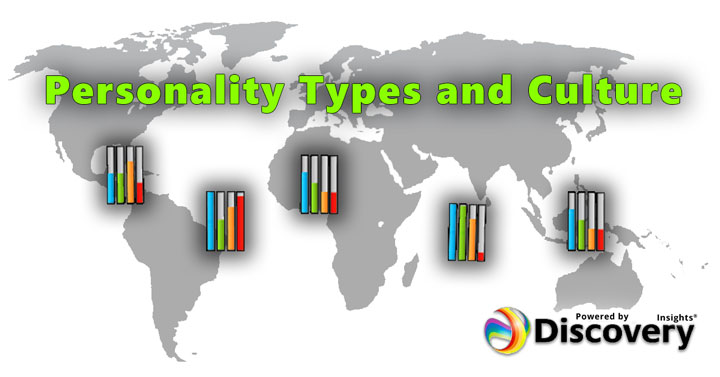Discover Yourself – Adapting to the Style of Others

One of the advantages of knowing one’s own personality type and being aware of the other personality types that might be encountered is evident in a business setting. Those in management positions have the most authority to force others to adapt to their own style – but to get the best from their workers, it actually benefits managers to adapt to others to some extent. For a productive team and a harmonious environment, it is a good idea for leaders to learn techniques to accommodate the preferences and personality types of those around them.
Today I’ll be sharing some practical tips on how managers can adapt to the style of others.
Communication Method
One big differentiator between various personality types in a work setting is their preferred method of communication. Introverted people often prefer to communicate through email, as it allows them time and space to process information and formulate a cogent response in their own time. Extroverted people, especially those who like to think out loud in a collaborative way, will often prefer to stop by someone else’s office in order to discuss an issue and get input on it. People who are highly skilled at multitasking may prefer talking on the phone so that they can accomplish some other small tasks while discussing a topic.
Of course, business necessities will always trump personal preferences. If a manager needs an answer immediately, then they are going to drop by others’ offices or call them to save time. If employees work remotely, then email will be the default. However, outside of these necessities, it is advisable for managers to be flexible. If they know that a given employee will give their best response to a query via email, then it makes sense to allow them to use that communication method where possible.
Communication Style
Another related issue is the complexities of communication style. This is an issue in which many people lack self-awareness, which is why it is important for managers to be proactive in addressing this topic. Some people, particularly those who are strongly focused on tasks, will want to know only the essential information that they require in order to complete their job. Giving these people more detail when communicating will only confuse or frustrate them. Other people, particularly those who are focused on relationships, will want to understand the part that their role plays in the bigger picture. Therefore, they will appreciate being furnished with all of the details of a situation even if it doesn’t directly affect them.
Managers who take note of the personality types of their employees can communicate with them more clearly by giving the appropriate level of detail for that personality type. A manager might choose to give a few key bullet points versus explaining an issue in depth, for example, depending on the preferences of the people they are addressing. When a manager needs to address a number of people, such as when emailing a group, then for maximum clarity they can include both: have bullet points with the essential information at the top, and then a section with additional information at the bottom. This way, the readers of the email can pick the appropriate level of communication for themselves.
Meetings
A challenge of the modern office is the dreaded meeting. Meetings are essential for conducting many aspects of business successfully, but they can be draining and are rarely enjoyed by all of the participants. When looked at in terms of personality type, this dislike of meetings is unsurprising. With multiple different personality types in one room trying to make progress all together, it is almost inevitable that there will be difficulties.
Managers have the chance to set the expectations and tone for meetings, and to moderate to make them more productive and helpful for everyone involved. The first step to a more productive meeting is to set goals clearly: is the purpose of the meeting to brainstorm, to plan, or to troubleshoot? Knowing the goal will help keep participants on track and allow different personality types to approach the topic in their own way. Also, is a meeting actually required? If the purpose of the meeting is purely to update others, for example, then this is best accomplished by sending out an email instead of gathering everyone together.
The second step is to send out an agenda for the meeting in advance. This will allow introverts to plan what they want to say, rather than forcing them to make off-the-cuff comments. The third step can be accomplished as a part of the agenda or as an in-person introduction, and that is to have a clear structure for the meeting. For example, first go around in a circle to share ideas or opinions without interruptions, and then have a free-for-all discussion session. This structure will help the more rigid team members know when to give input, and the more go-with-the-flow team members can thrive in the free discussion session.
Presenting, Teaching, and Workshopping
When it comes to presenting to a group, being aware of other personality styles can be a challenge. There are distinctly different learning styles as well as personality styles to consider, but a presenter will not always have a lot of information about a group’s styles before talking to them. Learning styles can include a preference for auditory material, written material, group discussion, or active engagement for best learning.
However, this needn’t be an insurmountable problem. Presenters already tend to use different teaching modalities – i.e. they talk to the group which is ideal for auditory learners, and they use slides which are good for visual learners. To make a presentation more accessible for other learning styles, presenters can set aside some time for group work and for practical hands-on work as well. These two new modalities will help those who learn best by talking an issue through with others or who learn by doing. Combining this approach to presenting and teaching with a personality-based approach for communication and meetings can enable managers to get the most from their employees.
To learn more about personality styles and how knowledge about them can benefit managers, visit www.discoveryourself.com.





